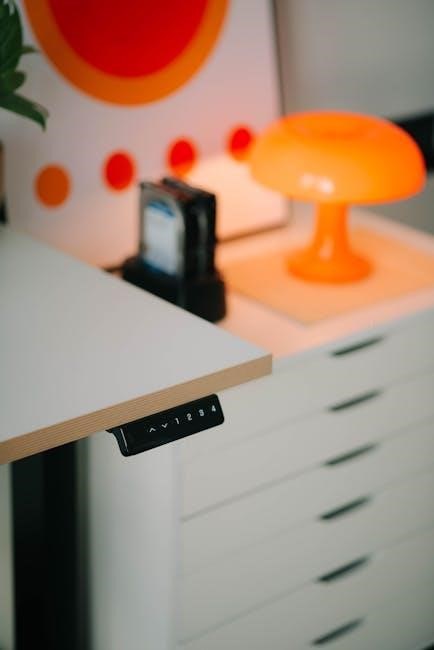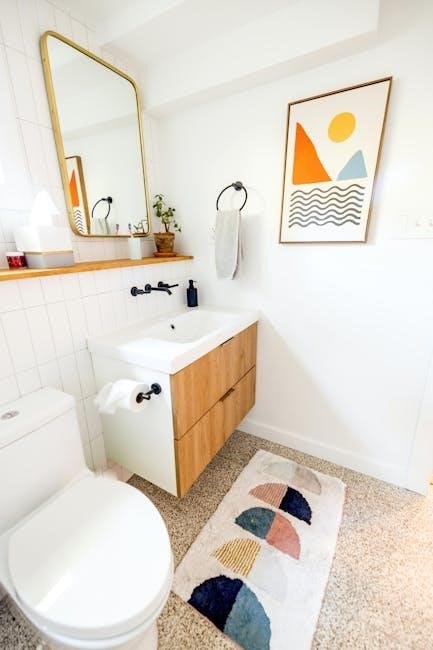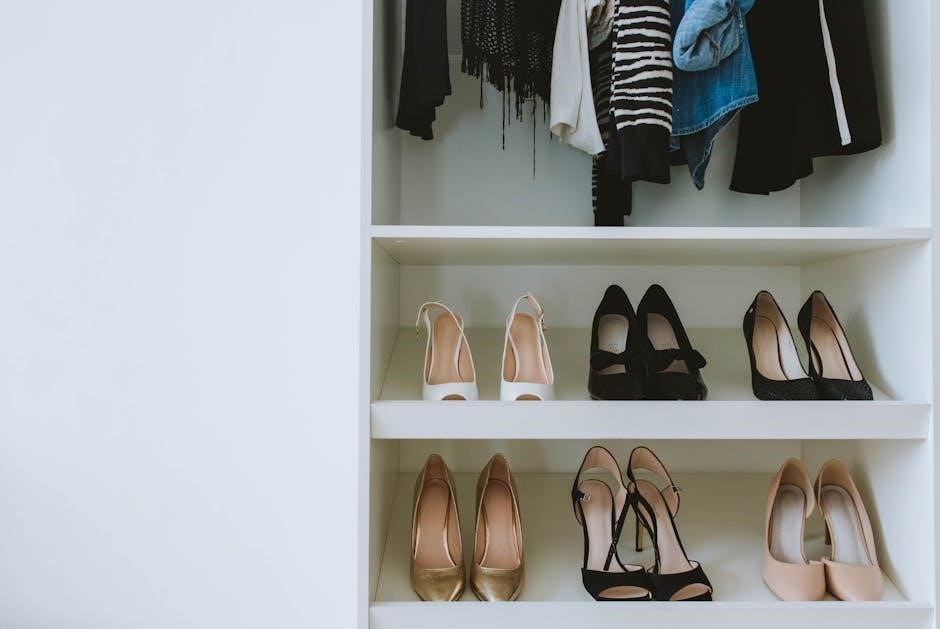Discover the perfect storage solution with our comprehensive guide to self-storage unit sizes. Learn how to choose the right size for your needs‚ ensuring efficient space utilization and cost-effectiveness.
Why Choosing the Right Storage Unit Size Matters
Choosing the right storage unit size is crucial to ensure your belongings fit comfortably‚ preventing damage and maximizing space. A unit that’s too small can lead to overcrowding‚ while one that’s too large may waste money. The right size ensures security‚ accessibility‚ and cost-efficiency. Whether you’re storing furniture‚ seasonal décor‚ or vehicles‚ proper sizing is key to protecting your items and meeting your specific needs‚ making it essential to assess your requirements carefully before selecting a unit.
What to Expect from This Guide
Welcome to our comprehensive self-storage unit size guide! This guide will help you understand various storage unit sizes‚ from small lockers to large spaces‚ and determine the perfect fit for your needs; Whether you’re storing furniture‚ seasonal items‚ or vehicles‚ we’ll provide insights into unit capacities‚ practical tips for maximizing space‚ and advice on selecting the right size for moving‚ decluttering‚ or long-term storage. Our goal is to make your storage experience efficient‚ secure‚ and stress-free.
Understanding Factors Influencing Storage Unit Size
Assessing the size and quantity of items‚ frequency of access‚ and special needs helps determine the ideal storage unit size for efficient and organized space utilization.
Assessing the Number and Size of Items to Store
Evaluating the quantity and dimensions of your belongings is crucial for selecting the right storage unit. Start by listing all items‚ focusing on bulky furniture‚ appliances‚ and seasonal decor. Measure larger pieces like sofas or refrigerators to ensure they fit comfortably. Small items‚ such as boxes or sports equipment‚ can be stacked to maximize space. Consider how often you’ll need access to certain items‚ as this may influence your organizing strategy. Accurate assessment helps avoid underestimating or overestimating storage needs.
Frequency of Access and Special Requirements
Consider how often you’ll need to access your stored items‚ as this impacts unit size and layout. Frequent access may require a larger unit for easier navigation or a drive-up option for convenience. Special requirements‚ such as climate control for sensitive items or electrical outlets for appliances‚ should also be factored in. Additionally‚ think about security needs‚ like unit alarms or 24/7 access‚ to ensure your belongings are protected and accessible as needed.

Common Self-Storage Unit Sizes and Capacities
Self-storage units range from small 5×5 units (like a closet) to large 10×30 spaces (ideal for multiple rooms or vehicles)‚ offering solutions for every storage need.
Small Units (5×5‚ 5×10‚ and Equivalent Sizes)
Small self-storage units‚ such as 5×5 and 5×10‚ are ideal for storing small items like boxes‚ seasonal décor‚ and compact furniture. A 5×5 unit‚ equivalent to a small closet‚ is perfect for decluttering personal spaces or storing items like sports equipment. The 5×10 unit‚ comparable to a large shed‚ can hold larger items such as bicycles‚ appliances‚ or small mattresses. These units are cost-effective and versatile‚ offering enough space for essential storage needs without excess capacity.
Medium Units (10×10‚ 10×15‚ and Equivalent Sizes)
Medium-sized storage units‚ such as 10×10 and 10×15‚ are ideal for storing larger items like furniture‚ appliances‚ and small vehicles. A 10×10 unit‚ comparable to a small bedroom‚ can hold 1-2 bedroom apartment furnishings‚ including sofas and refrigerators. The 10×15 unit offers more space‚ suitable for larger appliances‚ canoes‚ or small boats. These units provide flexibility‚ making them perfect for moves‚ renovations‚ or storing seasonal items‚ ensuring ample space without excessive capacity.
Large Units (10×20‚ 10×25‚ 10×30‚ and Larger)
Larger storage units‚ such as 10×20‚ 10×25‚ and 10×30‚ offer ample space for bulky items like cars‚ boats‚ or RVs. A 10×20 unit can fit most vehicles‚ while 10×25 and 10×30 units accommodate larger boats or multiple cars. These units are ideal for storing large furniture sets‚ business inventory‚ or equipment. Perfect for significant moves or long-term storage needs‚ they provide the extra room required for extensive belongings‚ ensuring everything fits securely and efficiently.

Vehicle Storage Solutions
Securely store cars‚ boats‚ RVs‚ and larger vehicles with units sized from 10×20 to 10×30. Ideal for protecting vehicles during extended periods‚ offering ample space and easy access.
Recommended Unit Sizes for Cars‚ SUVs‚ and Small Vehicles
For cars‚ SUVs‚ and small vehicles‚ a 10×20 storage unit is ideal‚ accommodating most standard vehicles. Compact cars may fit in a 10×15 unit‚ while larger SUVs or trucks require a 10×30. Ensure the unit’s dimensions match your vehicle’s length‚ width‚ and height to prevent damage. Measure your vehicle beforehand to choose the perfect fit and maximize space efficiently.
Storing Larger Vehicles‚ Boats‚ or RVs
For larger vehicles like boats‚ RVs‚ or trailers‚ consider units sized 10×30 or 12×30. These spacious units provide ample room for oversized items. Measure your vehicle’s length‚ width‚ and height to ensure a proper fit. Look for units with high ceilings and easy access for maneuvering. Some facilities offer outdoor parking or covered storage options for added protection. Ensure the unit includes features like electrical outlets or water access if needed‚ and prioritize secure‚ well-lit facilities for peace of mind.
Storage for Specific Needs
Storage units cater to specific needs like furniture‚ seasonal decor‚ or small equipment. Opt for 5×5 to 10×10 units‚ measuring items to ensure a fit.
Furniture Storage: Sofas‚ Beds‚ and Appliances
For furniture storage‚ a 10×10 unit is ideal for sofas‚ beds‚ and large appliances‚ accommodating 1-2-bedroom home furnishings. A 5×10 unit suits smaller furniture like chairs or desks. Measure items to ensure a snug fit‚ and consider stacking to maximize space. Protect delicate pieces with climate-controlled units and proper padding. This ensures your furniture remains in excellent condition during storage.
Seasonal Décor‚ Sports Equipment‚ and Small Items
Small storage units like 5×5 or 5×10 are perfect for seasonal décor‚ sports gear‚ and small items. These spaces‚ equivalent to a closet or small shed‚ can hold boxes of decorations‚ skis‚ bikes‚ or holiday items. Use shelves or bins to keep everything organized and accessible. For even smaller needs‚ storage lockers are ideal for items like camping gear or off-season clothing. Proper labeling ensures easy retrieval‚ making these units a practical solution for decluttering without sacrificing accessibility.
Determining the Right Size for Your Move
Match your storage unit size to your move by assessing bedroom count and item volume. A 5×15 unit suits a 1-bedroom home‚ while a 10×20 unit fits a 3-bedroom home seamlessly.
Storage for Moving: 1-Bedroom to 3-Bedroom Homes

For a 1-bedroom home‚ a 5×10 or 5×15 unit (400-600 sq ft) is ideal‚ holding furniture‚ appliances‚ and boxes. A 2-bedroom home fits well in a 10×10 unit (800 sq ft)‚ accommodating larger items like sofas and dining tables. For a 3-bedroom home‚ opt for a 10×20 unit (1‚600 sq ft)‚ which can store entire household contents‚ including vehicles‚ if needed. Choose the right size to ensure a smooth transition during your move.
Renovation and Decluttering Storage Solutions
During renovations or decluttering‚ a 10×10 unit (800 sq ft) is ideal for storing furniture‚ appliances‚ and construction materials. For smaller projects‚ a 5×10 unit (400 sq ft) suffices for seasonal décor‚ small furniture‚ and boxes. Units offer flexibility‚ allowing you to rent month-to-month and scale as needed. This solution ensures your belongings remain safe and organized‚ freeing up space for your project. Optimize storage with vertical stacking and clear labeling for easy access.

Calculating Your Storage Space
Measure your items and estimate space needs‚ considering vertical stacking. Assess unit dimensions and available space to maximize efficiency and ensure a perfect fit for your belongings.
How to Measure and Estimate Your Needs
Start by measuring the dimensions of your items to determine the minimum space required. Consider the arrangement of furniture‚ boxes‚ and equipment‚ ensuring there’s room for easy access and airflow. Use an interactive size guide or consult facility staff to match your needs with the right unit. Don’t forget to account for vertical space by stacking items safely. Accurate measurement and planning will help you avoid renting a unit that’s too small or too large‚ ensuring cost-effectiveness and efficiency.
Considering Vertical Space and Stacking
Maximize your storage unit’s potential by utilizing vertical space. Use shelves or stacking boxes to make the most of the unit’s height. Label boxes clearly and place heavier items at the bottom for stability. Leave space between stacks for easy access and airflow. Consider the cubic footage of the unit to ensure efficient use of space. Proper stacking and organization will help you fit more items while maintaining accessibility and reducing damage risks.

Cost and Value Comparison
Storage unit costs vary by size‚ location‚ and features. Compare prices for different sizes‚ ensuring you get the best value for your needs and budget.
How Unit Size Affects Pricing
Storage unit pricing increases with size‚ as larger units offer more space and flexibility. A 5×5 unit‚ equivalent to a small closet‚ is cost-effective for minimal items‚ while a 10×10 unit‚ similar to a bedroom‚ suits larger needs. Costs also vary by location‚ security features‚ and amenities. Always compare prices and consider discounts for long-term rentals or online bookings to ensure you get the best value for your storage requirements.
Evaluating Additional Features and Security
When selecting a storage unit‚ consider additional features like 24/7 surveillance‚ gated access‚ and high-quality locks for enhanced security. Climate-controlled units protect sensitive items from temperature fluctuations‚ while drive-up access offers convenience for heavy or bulky goods. Look for facilities with sturdy walls‚ secure gates‚ and well-lit areas. Some units also offer insurance options to safeguard your belongings. These features ensure your items are protected and easily accessible‚ maximizing both security and convenience for your storage needs.
Selecting the right storage unit size ensures efficient space use and cost savings. Prioritize security features like surveillance and climate control to protect your belongings effectively.
Final Tips for Selecting the Perfect Unit Size
When choosing a storage unit‚ start by assessing the size and quantity of your items. Measure large furniture and equipment to ensure they fit comfortably. Consider how often you’ll access your belongings‚ as this may influence the unit’s layout. Plan ahead by stacking items vertically and using shelves to maximize space. Lastly‚ evaluate security features and insurance options to protect your valuables. Always visit the facility to confirm the unit’s dimensions and condition before renting.

Maximizing Space and Ensuring Security
Maximize your storage unit’s space by using shelves and stacking items neatly. Label boxes for easy access and ensure fragile items are protected. Opt for units with robust locks and consider insurance for added security. Always visit the facility to confirm security features like cameras and well-lit areas before renting. Proper organization and reliable security measures will ensure your belongings are safe and efficiently stored.
